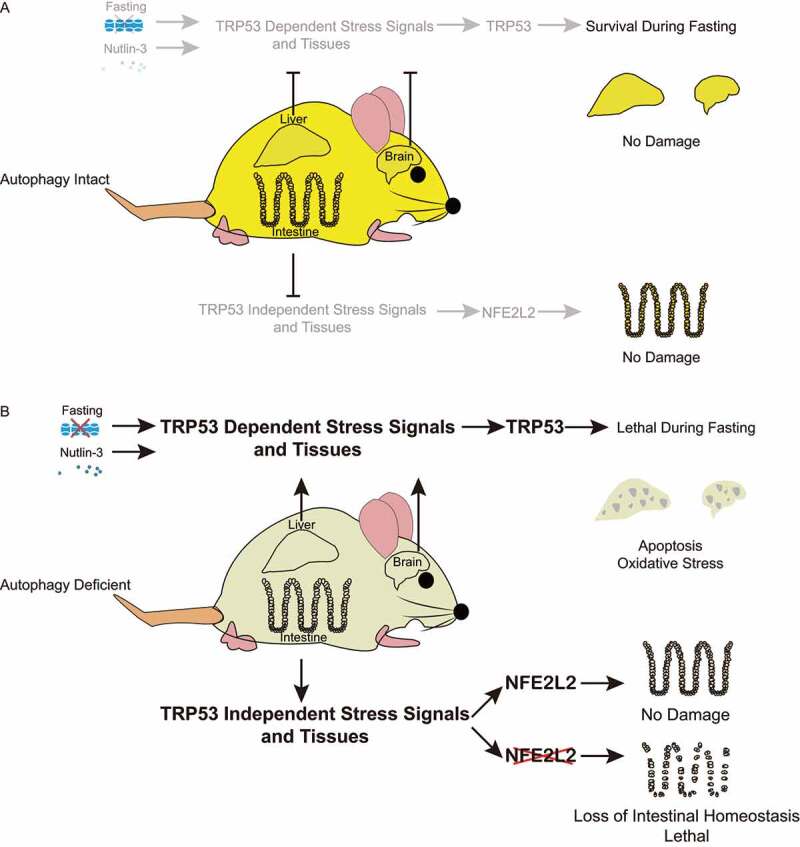Figure 1.

Autophagy protects tissues by interaction with TRP53 and NFE2L2 stress-response mechanisms in a tissue-specific manner. (A) Autophagy protects liver and brain, and sustains survival during fasting by inhibiting TRP53 (top), and maintains intestinal homeostasis (bottom). (B) When autophagy is deficient, TRP53 activation causes lethality upon fasting, and liver and brain damage that is further increased by Nutlin-3, whereas NFE2L2 alleviates intestinal damage in a TRP53-independent manner. In the absence of NFE2L2, autophagy deficiency is synthetically lethal due to severe intestinal damage.
